7 Ideas for Reusing Kitchen Scraps
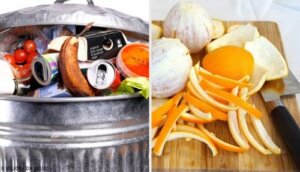

Reviewed and approved by the nurse Leidy Mora Molina
Many kitchen scraps still have one last use before being taken to the trash. This will help you save money and the environment. Many people know that the peels of fruits, vegetables, and vegetables can be used for various purposes, but the usefulness of other things such as tea bags or coffee powder left in the coffee pot is still relatively unknown.
The 3 R’s of ecology – reuse, reuse and recycle, -are the pillars on which the use of resources is based to reduce our amount of waste and its impact on the environment.
However, due to a lack of habit or lack of information, the practice of the three R’s may seem laborious and unnecessary. However, it’s much simpler to reduce, reuse, and recycle than it may seem, especially when it comes to reusing kitchen waste.
Areas where kitchen scraps can be used
Overall, kitchen waste can be used in the following areas:
- Cosmetics
- Health and well-being
- The household (cleaning, improvements, care of objects, gardening, etcetera)
In this article, we’ll give you some ideas for how to reuse kitchen scraps that you may not be aware of.
Kitchen scraps that can be used for other things
1. Lemon peel tea for digestion
Both lemon pulp and lemon peel have multiple properties and health benefits. They provide vitamins B, C, and E, and minerals such as copper, phosphorus, magnesium, and calcium.
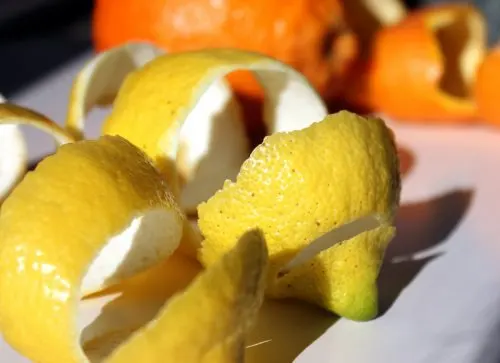
When it comes to improving digestive function, lemon peel tea is very effective. This tea can be drunk after every meal or at some point in the afternoon to promote intestinal transit and combat excess intestinal gas.
This drink can be enjoyed either hot or cold and gives the lemon one last use before discarding it. Wan to know the best part? According to a study published by the National Library of Medicine, it could even help prevent breast and colon cancer.
Ingredients
- Lemon peels
- 2 cups of water (300 ml)
- 1 tablespoon of honey (21 gr)
Preparation
- Boil the water together with the lemon peels.
- After the water has reached boiling point, leave the pot to simmer for 15 minutes more.
- Pass the liquid through a strainer to remove the peels.
- Serve and sweeten with a tablespoon of honey to taste.
We think you may also enjoy reading this article: 6 Common Mistakes to Avoid when Decorating the Kitchen
2. Orange peels for preventing ants
Believe it or not, a good way to get rid of insects is the smell of oranges. To do this, you can take advantage of orange peels, since their acid smell scares the insects away.
You can also make an infusion with the waste of an orange. Once ready, pour it into an atomizer and spray it near windows, doors, and all those places where there may be mosquitoes or ants. The smell will be much more pleasant than that of any chemical pesticide.
3. Coffee for eliminating bad odors
The aroma of coffee is perfect for eliminating bad odors. The coffee powder that remains in the coffee pot preserves the delicious and unmistakable smell of this beverage. To take advantage of it, take the powder and let it dry, then place it in cloth bags and place them in places such as closets, the shoe drawer, near the cat litter box, or in a trash can.
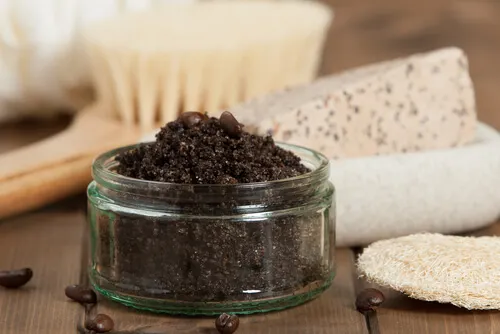
Another way to take advantage of coffee waste is to mix it with a little bit of liquid soap to apply it as a facial mask. According to several studies, coffee has anti-inflammatory, disinfectant, and exfoliating properties. For this reason, it’s also used in cosmetics, as is supported by the following Spanish-language work from the Universidad del Valle.
4. Composting or homemade fertilizer, one of the best ideas to take advantage of kitchen waste
There are many types of organic waste that can be used as compost for plants. Composting is the accumulation of organic waste to improve the quality of the soil. The waste from fruits, vegetables, and other foods enriches the quality of the soil and provides nutrients to plants.
To make compost, organic kitchen waste such as fruits and vegetables, eggshells, paper towels, oil, tree leaves, flowers, and coffee grounds are collected and ground. Dry materials such as dry leaves and branches should be added to this mixture so that it’s well covered.
The resulting mixture should be placed in a place that isn’t exposed to rain or sun. It should be stirred once a week and also every time new organic waste is added to the mixture. After three months, you will have perfect black, moist, odorless compost.
5. Black tea bags for polishing wood
Another kitchen waste that can be used is tea bags. In particular, black tea bags are very useful for cleaning and polishing wood.
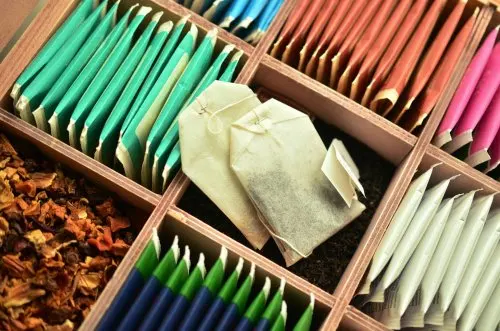
To do this, they should be left to soak in ½ cup of hot water. And after letting the tea steep, proceed to moisten a cloth with the tea and wipe it over the wood.
6. Banana peel face masks or house plants
Banana peel is rich in nutrients and is very useful for making a homemade face mask before throwing it away or adding it to the compost. To do this, simply wash your face with soap and water before rubbing the peel (freshly peeled) on the inside of your face.
Using constant gentle circular motions, apply for as long as possible (ideally 30 minutes) and then wash your face with warm water. You can also use banana peel (freshly peeled) when you have burned or irritated skin, as it will moisturize the affected area.
The environmental organization Sustainable America recommends banana peel as an element for compounds and as an excellent nutrient for house plants. Just let the banana peel sit in a pitcher of water for a few hours so that the water absorbs the nutrients and then water the plants normally.
But besides all this, banana peels can also be eaten and are very nutritious. They contain vitamins B6 and C, magnesium, potassium, and biotin, among other nutrients. In fact, many doctors recommend them to help regulate blood pressure and fight arteriosclerosis, anemia, and heartburn.
Like this article? You may also like to read: How to Organize Your Kitchen According to Marie Kondo
7. Pineapple peels as a natural diuretic
Another kitchen waste that can be put to good use is pineapple peel. This is an excellent diuretic and also helps burn fat.
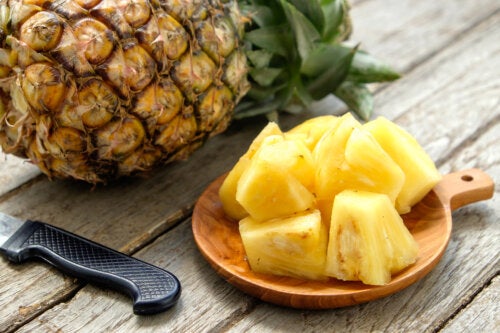
To prepare it, place the pineapple peels in a pot and boil them in a liter of water for 30 minutes. The liquid should then be left to steep. Then, you can drink it either hot or cold. Sugar or cinnamon can be added to sweeten the daste, or you can also opt for a spoonful of honey.
All cited sources were thoroughly reviewed by our team to ensure their quality, reliability, currency, and validity. The bibliography of this article was considered reliable and of academic or scientific accuracy.
- Cuadros Miranda, A., & Vélez Mena, J. (2018). Propuesta de un plan de factibilidad para la creación de una empresa dedicada a la producción y comercialización de un jabón artesanal en el municipio de Cartago Valle. Universidad del Valle.
- Fukushima, Y., Takahashi, Y., Hori, Y., Kishimoto, Y., Shiga, K., Tanaka, Y., Masunaga, E., Tani, M., Yokoyama, M., & Kondo, K. (2015). Skin photoprotection and consumption of coffee and polyphenols in healthy middle-aged Japanese females. International journal of dermatology, 54(4), 410–418. https://doi.org/10.1111/ijd.12399
- Hakim, I. A., Harris, R. B., & Ritenbaugh, C. (2000). Citrus peel use is associated with reduced risk of squamous cell carcinoma of the skin. Nutrition and cancer, 37(2), 161–168. https://doi.org/10.1207/S15327914NC372_7
- Niz, E. (n.d.). 10 things to do with banana peels. Sustainableamerica.org. Retrieved November 30, 2022, from https://sustainableamerica.org/blog/bananas/
- Rafiq, S., Kaul, R., Sofi, S. A., Bashir, N., Nazir, F., & Ahmad Nayik, G. (2018). Citrus peel as a source of functional ingredient: A review. Journal of the Saudi Society of Agricultural Sciences, 17(4), 351–358. https://doi.org/10.1016/j.jssas.2016.07.006
- Ramli, S., Alkarkhi, A. F., Shin Yong, Y., Min-Tze, L., & Easa, A. M. (2009). Effect of banana pulp and peel flour on physicochemical properties and in vitro starch digestibility of yellow alkaline noodles. International journal of food sciences and nutrition, 60 Suppl 4, 326–340.
- Wang, L., Wang, J., Fang, L., Zheng, Z., Zhi, D., Wang, S., Li, S., Ho, C. T., & Zhao, H. (2014). Anticancer activities of citrus peel polymethoxyflavones related to angiogenesis and others. BioMed research international, 2014, 453972. https://doi.org/10.1155/2014/453972
This text is provided for informational purposes only and does not replace consultation with a professional. If in doubt, consult your specialist.








